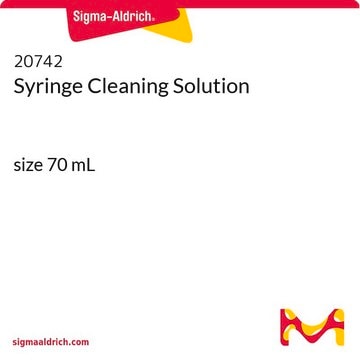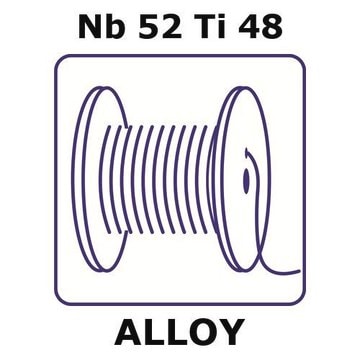GF59747631
Aluminum
wire reel, 1m, diameter 3.0mm, as drawn, 99.999%
Sinónimos:
Aluminum, AL005250
Iniciar sesiónpara Ver la Fijación de precios por contrato y de la organización
About This Item
Fórmula empírica (notación de Hill):
Al
Número de CAS:
Peso molecular:
26.98
MDL number:
UNSPSC Code:
12141702
PubChem Substance ID:
NACRES:
NA.23
Productos recomendados
assay
99.999%
form
wire
autoignition temp.
1400 °F
manufacturer/tradename
Goodfellow 597-476-31
resistivity
2.6548 μΩ-cm
L × diam.
1 m × 3.0 mm
bp
2460 °C (lit.)
mp
660.37 °C (lit.)
density
2.7 g/mL at 25 °C (lit.)
SMILES string
[Al]
InChI
1S/Al
InChI key
XAGFODPZIPBFFR-UHFFFAOYSA-N
Categorías relacionadas
General description
For updated SDS information please visit www.goodfellow.com.
Legal Information
Product of Goodfellow
Storage Class
13 - Non Combustible Solids
wgk_germany
WGK 3
flash_point_f
Not applicable
flash_point_c
Not applicable
Certificados de análisis (COA)
Busque Certificados de análisis (COA) introduciendo el número de lote del producto. Los números de lote se encuentran en la etiqueta del producto después de las palabras «Lot» o «Batch»
¿Ya tiene este producto?
Encuentre la documentación para los productos que ha comprado recientemente en la Biblioteca de documentos.
Ryan J Mailloux et al.
Experimental cell research, 317(16), 2231-2238 (2011-07-27)
Aluminum (Al) is a metal toxin that has been implicated in the etiology of a number of diseases including Alzheimer's, Parkinson's, dialysis encephalopathy, and osteomalacia. Al has been shown to exert its effects by disrupting lipid membrane fluidity, perturbing iron
Todd D Terhune et al.
Journal of immunotoxicology, 10(2), 210-222 (2012-09-13)
Aluminum-containing adjuvants increase the effectiveness of vaccination, but their ability to augment immune responsiveness also carries the risk of eliciting non-target responses, especially in genetically susceptible individuals. This study reviews the relevant actions of aluminum adjuvants and sources of genetic
J R Walton
Journal of Alzheimer's disease : JAD, 29(2), 255-273 (2012-02-15)
Most humans living in industrialized societies are routinely exposed to bioavailable aluminum salts in the form of additives-in commercially-prepared foods, alum-clarified drinking water, certain pharmaceuticals, sunscreens, and other topical applications. Minute amounts of this aluminum are absorbed into the circulation.
Simone Vecchi et al.
Journal of pharmaceutical sciences, 101(1), 17-20 (2011-09-16)
Aluminum (Al) salt-based adjuvants are present in a large variety of licensed vaccines and their use is widely considered for formulations in clinical trials. Although the regulatory agencies have clearly stated the acceptable levels of Al salts in vaccines for
M A Santos et al.
Current medicinal chemistry, 19(17), 2773-2793 (2012-03-30)
This review is focused on recent developments on hydroxypyri(mi)dines, as aluminum and actinide chelating agents to combat the toxicity due to accumulations of these metal ions in human body resulting from excessive metal exposure. After a brief update revision of
Nuestro equipo de científicos tiene experiencia en todas las áreas de investigación: Ciencias de la vida, Ciencia de los materiales, Síntesis química, Cromatografía, Analítica y muchas otras.
Póngase en contacto con el Servicio técnico



